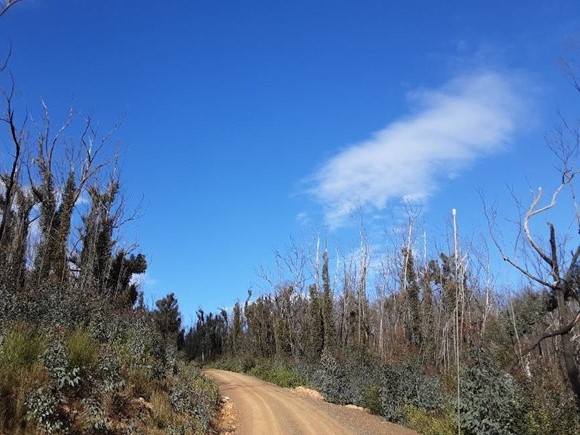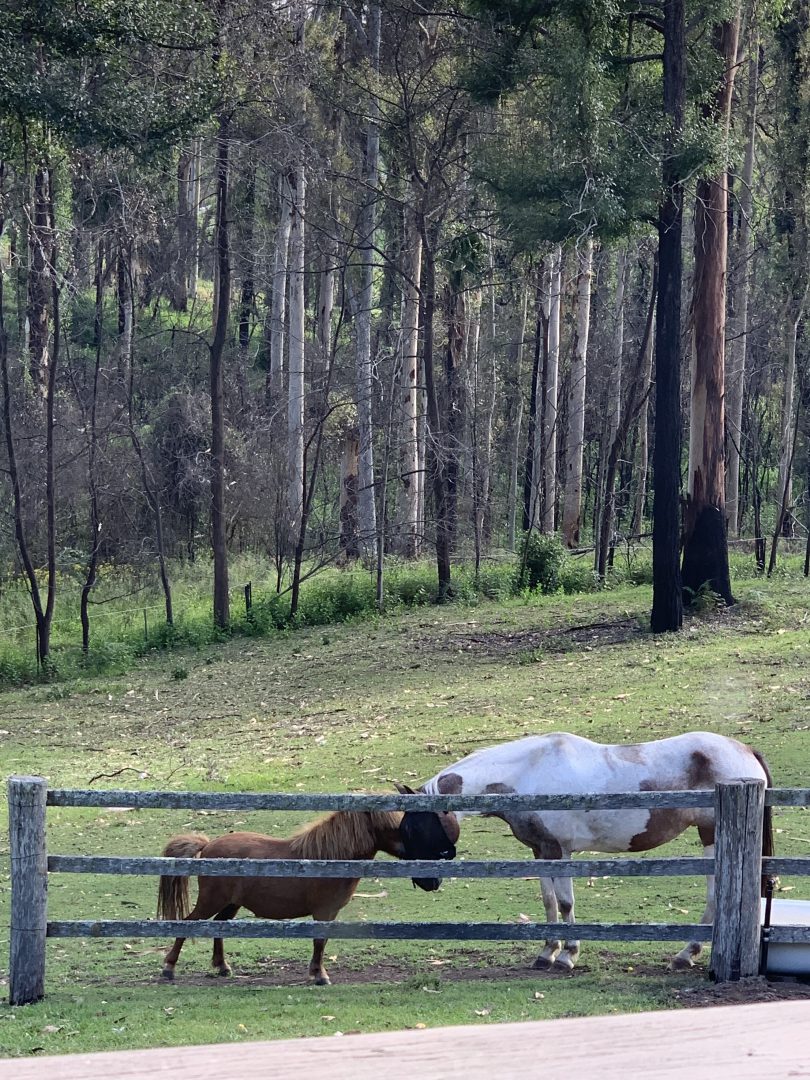
Secondary tree death along Belowra Road in the Eurobodalla. Photo: ESC.
Since the Black Summer bushfires almost two years ago, Eurobodalla Council has prioritised the removal of fire-affected dead and dying trees from verges along the 490 kilometres of local roads it manages.
Council’s director of infrastructure Warren Sharpe said community safety was the primary concern after fires ravaged 80 per cent of the shire, with work to remove dangerous trees starting almost immediately.
“We focused first on fallen trees and those posing an imminent threat, both along our roads and in council-owned reserves,” Mr Sharpe said.
“Thanks to Natural Disaster Relief funding, we could continue to remove fire-affected trees from roadsides – vital work that is expected to continue until the end of 2022.”
Now, the shire has secured almost $3 million under the Bushfire Generated Green Waste program.
“That allows us to tackle fire-affected trees in our reserves – particularly where the bush borders residents’ homes – and complete the work along roadside verges,” Mr Sharpe said.
Council’s works manager Tony Swallow said the funding would enable council to respond to the genuine concerns raised by residents, with thorough investigation of bushfire affected high-risk trees on nearby council land.
“We’re being asked about stands of hazardous and dead trees and the risks they pose,” Mr Swallow said.
“This new funding means we can remove the potential hazards posed by trees falling onto private property or as fuel for future bushfires. It also removes an ugly reminder of the past that many residents would prefer to forget.”
Mr Swallow said council employed a trained arborist to assess the condition of the trees prior to removal.

While some trees have made a good recovery from the bushfires, others are struggling or dead. Photo: Kim Treasure.
“With the bigger burnt trees, like the large eucalypts, canopy regrowth is a good indicator of the tree’s ability to survive,” he said.
“Of course, there was a lot of epicormic growth – branches growing directly from the tree trunks – after the fires as some species of eucalypts use these newly sprouted leaves to survive.
“Many have survived but, nearly two years on, others have less than 20 per cent of their previous canopy cover or are completely dead. Now, they can be safely removed.”
Transport NSW has already removed about 400 high-risk trees on a section of the Kings Highway at Clyde Mountain, now it has begun slope stabilisation as part of the second stage of NSW Government-funded Natural Disaster Recovery work.
A Transport for NSW spokesperson said the work was needed to improve safety and resilience on this vital stretch of highway, which connects Canberra with the Eurobodalla coast.
“We’ve prioritised this work for the Kings Highway to improve safety for our customers, and prevent the landslips that have been experienced in the past during weather events,” the spokesperson said.
“Work includes installing soil nails and shotcrete to help stabilise the slopes in one key area, and rock bolting on other slopes. Additional remediation work including further rock bolting will be carried out early next year.
“Safety is our number one priority, and we are committed to making the Kings Highway safer by installing up to 70 rock bolts along this stretch, at a total cost of $700,000.
“This safety measure will help prevent landslides from occurring at this location and help support up to 20 jobs.”
Unlike the earlier work which caused extensive closures of the Kings Highway, work on this project will be carried out on weeknights until 16 December to ensure it’s completed in time for the Christmas break.
Motorists are advised of changed traffic conditions including a single lane closure under stop/slow traffic control from 7 pm to 5 am Monday to Thursday, weather permitting.
Traffic may also be stopped in both directions for up to 20 minutes to move machinery.
Motorists are advised to allow additional travel time, drive to the conditions and follow the direction of signs and traffic control.







